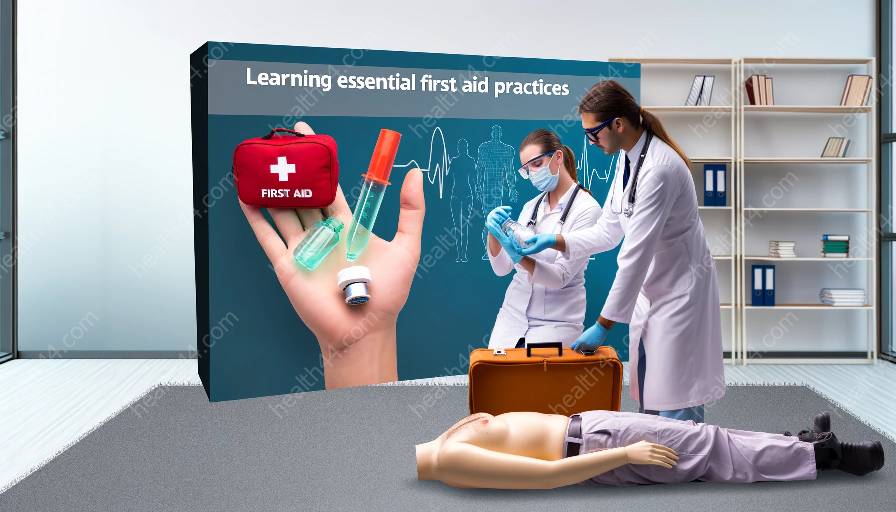Eye injuries and nosebleeds can occur in a variety of settings, from the workplace to the sports field. Understanding how to provide first aid for these injuries is crucial for preventing further damage and ensuring quick recovery. In this guide, we will explore the essential first aid techniques for eye injuries and nosebleeds, as well as when to seek medical help.
First Aid for Eye Injuries
Eye injuries can range from minor irritations to more serious trauma. Understanding how to provide immediate care for different types of eye injuries is essential.
Foreign Object in the Eye
If a foreign object becomes lodged in the eye, it's important not to rub the eye or try to remove the object yourself. Follow these steps to provide first aid:
- Encourage the person to keep their eyes closed to prevent further irritation.
- Gently cover the unaffected eye to reduce movement.
- Seek medical help to safely remove the object and assess any potential damage.
Chemical Burns or Irritations
For chemical burns or irritations to the eye, quick and appropriate action is crucial. Follow these steps:
- Immediately flush the eye with clean, lukewarm water for at least 15 minutes.
- Hold the eyelids open to ensure thorough rinsing.
- Seek immediate medical attention for further treatment and evaluation.
Blunt Force Trauma
Blunt force trauma to the eye can result from impact or accidents. If someone experiences this type of injury, it's important to:
- Apply a cold compress or ice pack to the affected eye to reduce swelling.
- Encourage the individual to keep their head elevated to minimize further swelling.
- Visit an eye care professional or seek emergency medical care for an evaluation and appropriate treatment.
First Aid for Nosebleeds
Nosebleeds, or epistaxis, can occur spontaneously or as a result of trauma. Knowing how to provide first aid for nosebleeds can help control the bleeding and prevent complications.
Initial Steps
When someone experiences a nosebleed, take the following immediate actions:
- Have the individual sit upright and lean forward to prevent blood from running down the throat.
- Pinch the soft parts of the nose together, just below the bridge, and continue applying pressure for at least 10 minutes.
- Avoid tilting the head back, as this can cause blood to flow into the throat.
If Bleeding Persists
If the nosebleed continues after 10 minutes, consider these additional steps:
- Apply a cold compress or ice pack to the bridge of the nose to help constrict blood vessels and reduce bleeding.
- Consider seeking medical help if the bleeding does not stop after 20 minutes of consistent pressure.
- Monitor the individual for signs of excessive blood loss or dizziness, and seek emergency medical care if necessary.
When to Seek Medical Help
While first aid techniques can be effective for managing eye injuries and nosebleeds, certain situations require prompt medical attention. Always seek medical help if:
- The eye injury involves penetrating trauma, such as cuts or foreign objects embedded in the eye.
- Chemical burns or irritations to the eyes result from exposure to hazardous substances.
- Nosebleeds are recurrent or do not resolve with initial first aid measures.
- Signs of excessive blood loss, dizziness, or other concerning symptoms are present.
Conclusion
By understanding and applying appropriate first aid techniques for eye injuries and nosebleeds, individuals can provide immediate care and potentially minimize further complications. Knowing when to seek medical help is equally important for ensuring optimal recovery and preventing long-term damage. Stay informed and proactive in managing these common injuries to protect your own and others' well-being.



